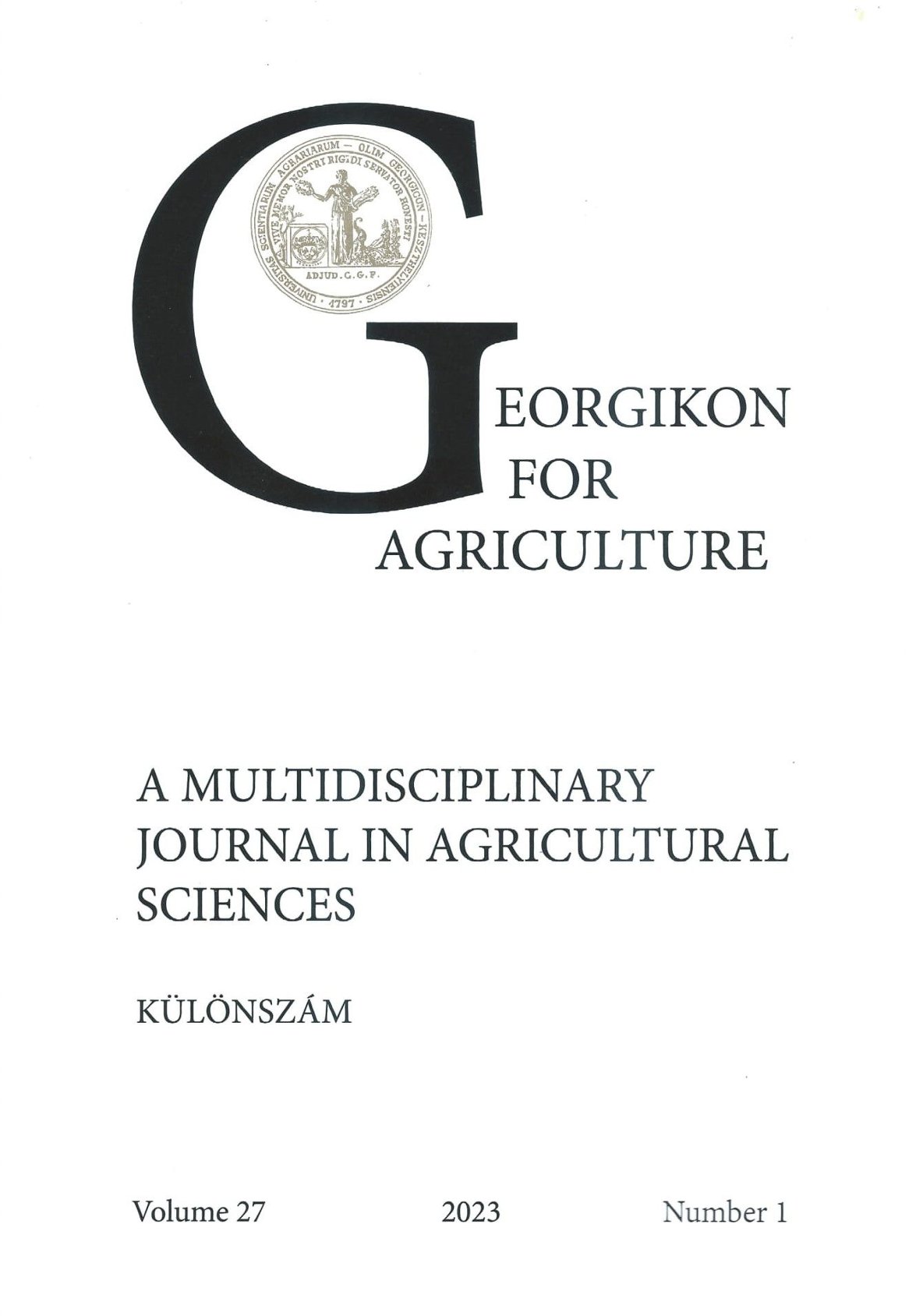Using the HET-CAM test in determining the eye irritation potential of some pesticides
Kulcsszavak:
HET-CAM, szemirritáció, in vivo, in vitro, UN GHSAbsztrakt
A növényvédő szerek engedélyezését számos toxikológiai vizsgálat előzi meg. Egyik ezek közül a szemirritációs tulajdonságok megállapítására irányul. A korábban egyedüliként elfogadott Draize-teszt (in vivo), amely a teljes irritációs potenciált lefedi, a legtöbbet kritizált módszer. Helyettesítésére napjainkban több in vitro módszert is alkalmaznak, mint például a tyúktojás chorioallantois membránját felhasználó tesztet (HET-CAM). Vizsgálatunkban 4 peszticiden végzett HET-CAM teszt eredményeit hasonlítottuk össze az in vivo Draize eredményekkel. Az eredmények szignifikánsak, 75%-os korrelációt mutattak. A HET-CAM teszt alkalmas egy kísérletsorozat részeként a szemirritáció megállapítására.
Hivatkozások
Barile, F. A. 2010. Validating and troubleshooting ocular in vitro toxicology tests. Journal of Pharmacological and Toxicological Methods 61. 136-145
Budai, P., Kormos, E., Buda, I., Somody, G. and Lehel, J. 2021. Comparative evaluation of HET-CAM and ICE methods for objective assessment of ocular irritation caused by selected pesticide products. Toxicology in Vitro 74. 105150
Choksi, N. Y., Truax, J., Layton, A., Matheson, J., Mattie, D., Varney, T., Tao, J., Yozzo, K., McDougal, A. J., Merrill, J., Lowther, D., Barroso, J., Linke, B., Casey, W. and Allen, D. 2019. United States regulatory requirements for skin and eye irritation testing, Cutaneous and Ocular Toxicology 38(2). 141-155.
Draize, J., Woodard, G. and Calvery, H. 1944. Methods for the study of irritation and toxicity of substances applied topically to the skin and mucous membranes. Journal of Pharmacology & Experimental Therapeutics 82. 377-390.
European Commission, 2009. European Commission Regulation (EC) no 1107/2009 of the European Parliament and of the council of 21 October 2009 concerning the placing of plant protection products on the market and repealing council directives 79/117/EEC and 91/414/EECOff. J. Eur. Union L, 309 (52) (2009) 1-50.
Invittox Protocol Number 47. 1990. HET-CAM Test, ISSN 0960–2194
Kormos, É., Tavaszi, J., Budai, P., Pongrácz, A. and Lehel, J. 2009. Eye irritation study of some pesticides on chorioallantoic membrane of the egg. Communications in agricultural and applied biological sciences 74(1). 125-128.
Luepke, N. P. and Kemper, F. H. 1986. The HET-CAM test: An alternative to the Draize eye test. Food and Chemical Toxicology 24. 495-496.
OECD, 2019. Guidance document on an Integrated Approaches to Testing and Assessment (IATA) for serious eye damage and eye irritation. Series on Testing and Assessment No. 263. (Second Edition)
Prinsen, M. K., Hendriksen, C. F. M., Krul, C. A. M. and Woutersen, R. A. 2017. The Isolated Chicken Eye test to replace the Draize test in rabbits. Regulatory Toxicology and Pharmacology 85. 132-149.
Talaei, S., Mahboobian, M. M. and Mohammadi, M. 2020. Investigating the ocular toxicity potential and therapeutic efficiency of in situ gel nanoemulsion formulations of brinzolamide. Toxicology Research 9. 578-587.
Tavaszi, J. and Budai, P. 2006. Toxicity study of agrochemicals on chorioallantoic membrane of the egg. Communications in Agricultural and Applied Biological Sciences 71. 101-105.
Tavaszi, J. and Budai, P. 2007. The Use of HET-CAM Test in Detecting the Ocular Irritation. Communications in Agricultural and Applied Biological Sciences 72. 137-141.
Letöltések
Megjelent
Folyóirat szám
Rovat
License
Copyright (c) 2023 Esther Ijeoma Idogwu, Svetlana Kazarova, Éva Kormos

This work is licensed under a Creative Commons Attribution-NonCommercial-NoDerivatives 4.0 International License.
The articel is under the Creative Commons 4.0 standard licenc: CC-BY-NC-ND-4.0. Under the following terms: You must give appropriate credit, provide a link to the license, and indicate if changes were made. You may do so in any reasonable manner, but not in any way that suggests the licensor endorses you or your use. You may not use the material for commercial purposes. If you remix, transform, or build upon the material, you may not distribute the modified material. You may not apply legal terms or technological measures that legally restrict others from doing anything the license permits.




 Georgikon for Agriculture
Georgikon for Agriculture